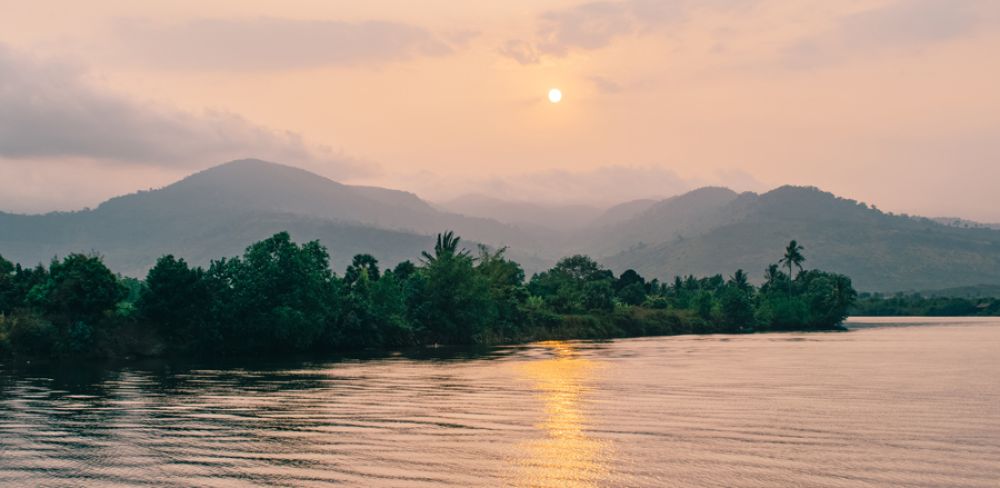

The serene and picturesque Kampot River is at the heart of Cambodia's tranquil province of Kampot, a hidden gem known for its colonial architecture, pepper plantations, and natural beauty. Tourism in Kampot, like much of Cambodia, has seen a transformation over the years, with the river playing a central role in its evolution.
Historically, Kampot was a sleepy riverside town that started to gain the attention of travelers in the late 20th century. Following the end of conflict in Cambodia, intrepid tourists began exploring the country beyond the famed temples of Angkor. Seeking an authentic experience, they found themselves in Kampot, drawn to the idyllic setting along the riverbank and the cultural heritage of the region.
Dating back to the French colonial era, Kampot was already a retreat for colonists escaping the heat of Phnom Penh. Vestiges of this period can still be seen in the elegant architecture that lines Kampot’s streets, lending a historical charm that has become part of the draw for tourists seeking a taste of Cambodia’s colonial past.
Kampot River itself is a bastion of activity and tranquility, offering a range of activities for visitors. Tourists can enjoy boat tours to explore the scenic waterways, witnessing stunning sunsets and the verdant landscape that surrounds the river. Kayaking and paddle boarding have also become popular, providing a hands-on way to connect with the natural beauty of the region.
Bokor Hill Station, once a colonial hill station retreat, is now an eerie yet fascinating ruin that has turned into a popular day-trip destination from Kampot. Additionally, the nearby Phnom Bokor National Park offers great trekking and wildlife-watching opportunities.
Pepper Plantations are another key attraction for visitors. Kampot pepper is renowned worldwide for its quality, and tours of plantations educate visitors on the production process and the importance of pepper to the local economy.
In recent years, there has been a push towards sustainable and eco-friendly tourism in Kampot. Many lodgings and tour companies are adopting environmentally sensitive practices to protect the river and natural surroundings that make this area special.
Farm stays and community-based tourism also offer travelers an immersive experience, connecting them with the local culture and lifestyle. This allows tourists to contribute directly to the livelihood of local communities while learning about their traditions and daily activities.
Wellness tourism has found a niche in Kampot, with retreats focusing on yoga and meditation becoming increasingly popular, offering serene river views that complement the peaceful practices.
Overall, Kampot and its river remain a lesser-known but deeply cherished destination for those seeking a blend of history, nature, and cultural engagement in Cambodia.
To truly experience the enchantment of the Kampot River, it’s advisable to plan for a stay of several days. With a range of accommodation options from riverside bungalows to boutique hotels, visitors can find the perfect base for exploring the area's attractions.
The best times to visit are during the dry season, from November to May when the weather is ideal for outdoor activities. However, even during the rainy season, Kampot has its own allure, with lush landscapes and fewer tourists, offering a more private experience.
As tourism continues to develop, Kampatchers remain hopeful that growth can be managed sustainably to preserve the unique charm and environmental integrity of the Kampot River and its surroundings for generations to come.